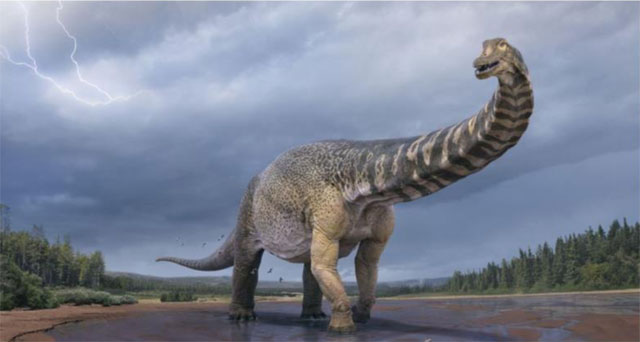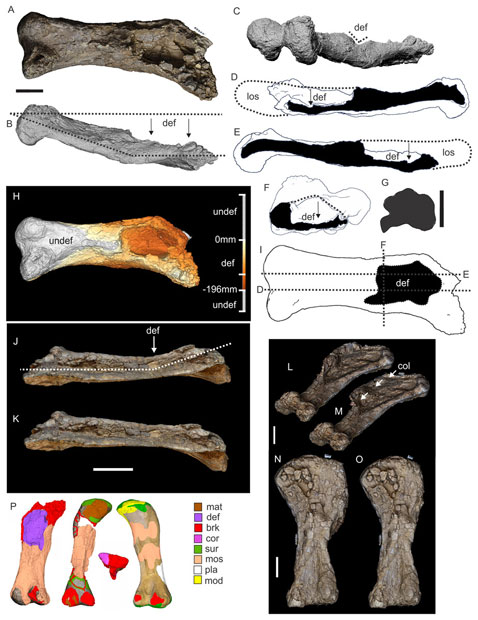“Cooper” the giant Australian dinosaur, whose bones were found back in 2007 has been officially named. The largest animal ever to walk on the “land down under” has been named Australotitan (Australotitan cooperensis), this Cretaceous giant is estimated to have been around 30 metres in length, so Australotitan rivalled some of the giant South American titanosaurs, (to which it was distantly related), in size. Writing in the academic journal “PeerJ”, scientists describe this Australian titanosaur.

“Southern Titan”
Writing in the academic journal “PeerJ”, the researchers who include corresponding author Scott Hocknull of the Queensland Museum and Robyn and Scott Mackenzie from the Eromanga Natural History Museum (Queensland), used limb bone comparisons to estimate the size of Australotitan. A sophisticated computer programme provided detailed 3-D surface scans of the fossil bones to permit autapomorphies to be identified that led to the erection of this new taxon.
A Giant Australian Titanosaur
The huge dinosaur, with a shoulder height of around 6 metres was named “Southern Titan”, the trivial (species name), honours the site of the fossil discovery – the Cooper-Eromanga Basin, Cooper Creek system and the common vernacular for this part of south-western Queensland “Cooper Country”.
Back in 2015, Everything Dinosaur reported on the on-going research being conducted on this titanosaur when final preparations were being made for the opening of the Eromanga Natural History Museum which was being built to house this specimen along with other dinosaur and marine reptile remains that had been found in Queensland.
To read our article about “Cooper”: Super-Duper Dinosaur Nicknamed “Cooper”.
The Benefits of the 3-D Bone Scans
Several of the bones although almost complete show distortion. The bones of this particular titanosaur seem to have been trampled and partly crushed by the movements of another titanosaur that “walked over the grave” of Australotitan. The use of the 3-D bone scans permitted the researchers to correctly reconstruct bone morphology and a subsequent phylogenetic assessment revealed that A. cooperensis was related to three other, roughly contemporaneous sauropod taxa known from Queensland – Wintonotitan, Diamantinasaurus and Savannasaurus.

The scientific paper: “A new giant sauropod, Australotitan cooperensis gen. et sp. nov., from the mid-Cretaceous of Australia” by Scott A. Hocknull, Melville Wilkinson, Rochelle A. Lawrence, Vladislav Konstantinov, Stuart Mackenzie and Robyn Mackenzie published in PeerJ.
Visit the Everything Dinosaur website: Everything Dinosaur.






Leave A Comment